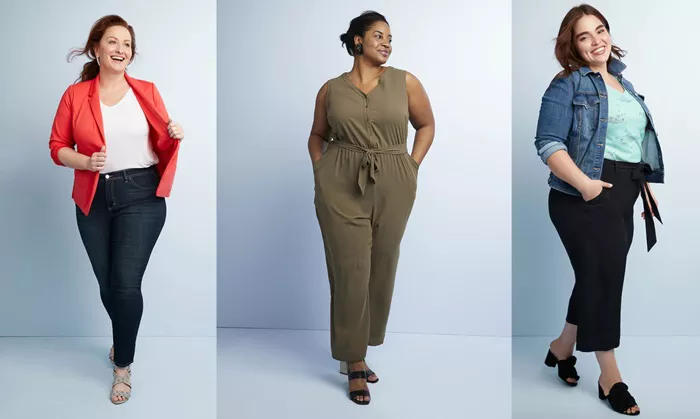New data from social-commerce platform Mys Tyler reveals a significant gap in the fashion industry’s representation of plus-size women, despite their large presence in the population. According to the study, 54.4% of American women wear a dress size 14 or above, with size 16 being the most common. However, only 0.8% of the looks at New York Fashion Week for Autumn/Winter 2024 featured plus-size models, highlighting a persistent lack of inclusivity.
The average American woman stands 5 feet 4 inches tall, and 58.3% wear a bra size D cup or larger, according to the Mys Tyler Insights 2024 report. Despite these statistics, brands appear to overlook this demographic on major fashion stages.
In Australia, more than half (52.1%) of women wear a dress size 16 or above, and 67% wear size 14 or higher. The survey also found that 36.9% of Australian women are considered plus-size, while only 9.1% fall within the straight-size range (sizes 4-8). The majority, 53.9%, are classified as mid-size, wearing sizes 10-16.
Nearly half of Australian women describe their body shape as curvy, with the most common bra size being a DD cup. The average height of women in Australia is 5 feet 5 inches, matching the average height of women in the United Kingdom.
In the UK, 47.4% of women are plus-size, with the average dress size ranging from 16 to 18. However, only 2.4% of the looks at London Fashion Week included plus-size models. Most British women wear a bra size between DD and E, and 58.5% wear a DD cup or larger.
Despite these numbers, the fashion industry remains largely unrepresentative of plus-size women. “Even in 2024, size-inclusive representation is heavily lacking on runways and in advertising,” said Sarah Neill, founder of Mys Tyler. She added that many women continue to face challenges when shopping both in-store and online, reflecting a disconnect between the industry and the needs of a significant portion of the female population.
Neill’s platform, Mys Tyler, aims to address this gap by focusing on body inclusivity and offering personalized shopping experiences for women of all sizes. However, the fashion industry at large still has a long way to go in reflecting the diversity of women’s body types in its marketing and fashion shows.
Related topics:
- How To Choose The Best Plus-Size Waterproof Jacket
- How To Choose Plus Size Women’s Golf Apparel That Fits
- Top 10 Plus-Size Nursing Tops For Comfortable Feeding

